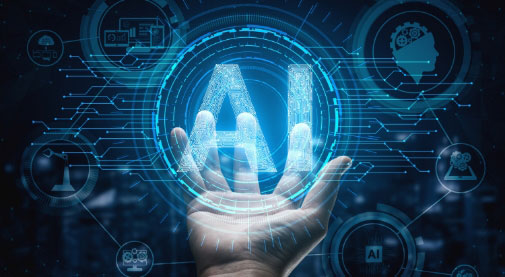AIoT Market: A Sneak-peek
As per the report presented by Research and Markets, the global Artificial Internet of Things market is bound to achieve the value of $65.9 billion by 2025 at a CAGR of 39.1%. It has also been predicted that the AI-enabled edge device market would assume to be the fastest-growing segment within the AIoT.
It should be known that AIoT stands to automate the different data processing systems by helping them convert the raw IoT data into purposeful information. Moreover, today’s AIoT solutions are paving the path to the next-generation AI Decision as a Service (AIDaaS)
Chalking out the difference between AIoT and IoT
Let’s check the variance between IoT and AIoT to understand the advanced concept better –
When we talk about IoT, we talk about a digital nervous system that employs hardware sensors to be physically attached to the machines for data retrieval. IoT is bound to fetch millions of data sets from different equipment, devices, and appliances with minimal human intervention, but they do not perform any analysis.
The AIoT – Artificial Intelligence of Things forms up to be the brain that controls the nervous system. AIoT utilizes software code developed by the programmers to perform specific tasks, thereby providing for intelligent decision-making. Being the next logical step of the IoT, AIoT stands to operate independently with zero human support but with AI algorithms and predictive maintenance capacities.
Understanding the Convergence of AI and IoT

Well, as we all know that Artificial Intelligence thrives on data. This is to say that AI is all about deciphering and automation with the help of applying a range of statistical and computational techniques.
When IoT becomes embedded with AI, the IoT-driven devices get entitled to additional capabilities like comprehending patterns from customer interactions, service providers, and even other devices in the ecosystem. Furthermore, with the integration of IoT into AI, the devices can better adjust to new inputs or changes in the environment to accomplish niche tasks without any manual intervention.
AIoT & Its Significance in Businesses:
AIoT can capture real-time data and analyze the same to deliver real value to businesses:
-
Increased Productivity:
AIoT enables true automation of manual tasks, facilitating systems to make autonomous decisions, leading to increased productivity and efficiency.
-
Reduced Costs:
The convergence of AI and IoT stands to optimize the processes, bringing in the possibilities of reduced marginal transactional costs.
-
Enhanced Life Cycle:
AIoT provides businesses with a quicker lifecycle when it comes to data conversion and furnishing for tangible business value.
-
Ceaseless Growth:
Businesses get amenities like easier implementation, which leads to growth of business operations with meaningful insights and fast-ever decisions.
-
Seamless Customer Management:
AIoT gives you better customer management and communication, owing to advanced bots and speech recognition capabilities.
-
Constant Updation:
Following continuous product experimentation and iterations, AIoT provides faster time to markets for new releases or product updates.
AIoT & Its Practical Applications
DHL:
As per the statements by DHL authorities, AIoT has helped subdued 50% of their conveyance time with 90% fidelity of real-time tracking. DHL the innovative IoT solutions and artificial intelligence through Smart Trucking operations teams. For this purpose, it employs a flexible model that streamlines the businesses by forming a transportation model. This model further stands to minimize exhaustion among the drivers and helps them consume a shorter time on the road, thereby providing a better work-life balance.
Walmart:
Walmart has rightly harnessed Artificial Intelligence and Machine Learning integrated with IoT. This integration has only been a secret behind the effortless management of numerous brick-and-mortar models with equally countless online stores for each country or state. It has employed the most advanced technologies like that of Facial recognition software, voice-based search by Google Assistant, and cross-technology solutions. Hence, making the retail industry scale up higher revenues spread across the years.
London City Airport:
Being the first airport to employ AI, IoT, and cross-technology networking, London City Airport has stood effective in monitoring every minute detail of travel to furnish purposeful insights to the passengers. With AIoT adoption, London City Airport has facilitated its cabin crew to track the passengers’ whereabouts through IoT devices; boarding queue traffic can update gate information, track baggage, and so on.
Wrapping Up
AIoT possesses a comprehensive set of use-cases across industries, acting as one-time investments for them and delivering life-long benefits. Artificial Internet of Things is thoroughly reliant upon the enterprise budget and goals to align them absolutely to enhance their productivity. Get accurate analytics, explicit data processing, and automation techniques all in one place, and all formed primarily to give more dependable outcomes from more generous and significant data. Establish connections with Teksun’s tech experts and open up a range of possibilities for AI and IoT integration.



